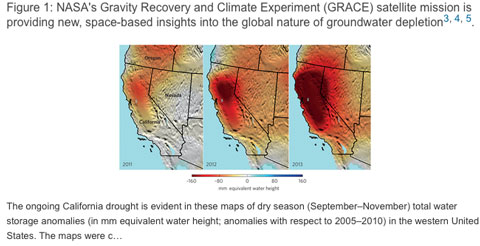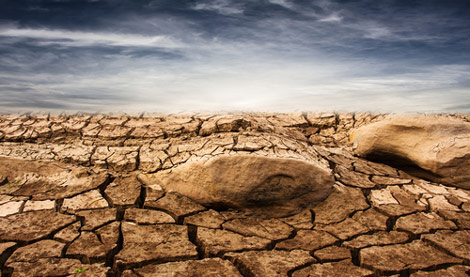Rain has returned to California, taking pressure off of the immediate emergency of the ongoing drought via the help of several inches of recent rainfall.
But the Golden State loses about 4 trillion gallons per year, and would need roughly three times that amount to return to safe and normal levels.
“Recent rains are no reason to let up on our conservation efforts,” Felicia Marcus, chair of the State Water Resources Control Board stated.
The same NASA experts who sounded the alarm over the drought’s threat to the food supply are now warning that California needs some 11 trillion gallons of water to replenish to normal levels.
Eleven trillion gallons — that’s the amount of water that NASA scientists say would be needed to replenish key California river basins in what they’re calling the first-ever estimate of the water necessary to end an episode of drought. That 11 trillion gallons is the deficit in normal seasonal levels that NASA said a team found earlier this year in the Sacramento and San Joaquin river basins, using Gravity Recovery and Climate Experiment (GRACE) satellites. The GRACE data, presented Tuesday at the American Geophysical Union meeting in San Francisco, showed those river basins losing about 4 trillion gallons per year — more than state residents use annually, NASA said.
Adding to this challenge, neighboring and nearby states in the Southwest with whom California shares some water rights have been meeting recently over the water emergencies – and making clear that it will NOT BE SHARING any additional water with the parched state:
“If anybody thought we were going to roll over and say, ‘OK, California, you’re in a really bad drought, you get to use the water that we were going to use,’ they’re mistaken,” said James Eklund, director of the Colorado Water Conservation Board
“Arizona has the same interest” as Colorado in ensuring its supply is protected, said Michael J. Lacey, director of the Arizona Department of Water Resources. “I am not sure we will express it as pointedly as that,” Lacey said of Eklund’s remarks.
Eklund’s insistence on Colorado’s water rights drew diplomatic responses from his colleagues in other states on the eve of a Las Vegas meeting of water managers. The managers, from seven states, are working on ways to ensure 40 million people in the parched Colorado River basin don’t go thirsty.
“California has not sought any Colorado River water beyond its entitlement and has no intention of doing so,” said Jeff Kightlinger, general manager of the Metropolitan Water District of Southern California
The ongoing droughts in the Southwest during the past decade have depleted more than 14 trillion gallons from the Colorado River basin – an amount even greater than California needs to regain normal levels.

And the worst may be yet to come:
Many experts believe the current drought is only the harbinger of a new, drier era in which the Colorado’s flow will be substantially and permanently diminished.
Faced with the shortage, federal authorities this year will for the first time decrease the amount of water that flows into Lake Mead… a crucial source of water for cities from Las Vegas to Los Angeles and for millions of acres of farmland.
Reclamation officials say there is a 50-50 chance that by 2015, Lake Mead’s water will be rationed to states downstream. That, too, has never happened before.
“If Lake Mead goes below elevation 1,000” — 1,000 feet above sea level — “we lose any capacity to pump water to serve the municipal needs of seven in 10 people in the state of Nevada,” said John Entsminger, the senior deputy general manager of the Southern Nevada Water Authority.
As SHTF previously mentioned, the rationale for prepping is as strong as ever:
That’s pretty harsh news, and the long term impact could be pretty serious, and just one more reason to prepare a reserve food supply and prepare a plan to deal with anything that may come.
There have been many other warning signs about the food supply and commodities markets – not the least of which include the billions in losses that corn farmers are facing due to market rejection in China and other countries as a result of GMO contamination.
Source:: ShtfPlan



